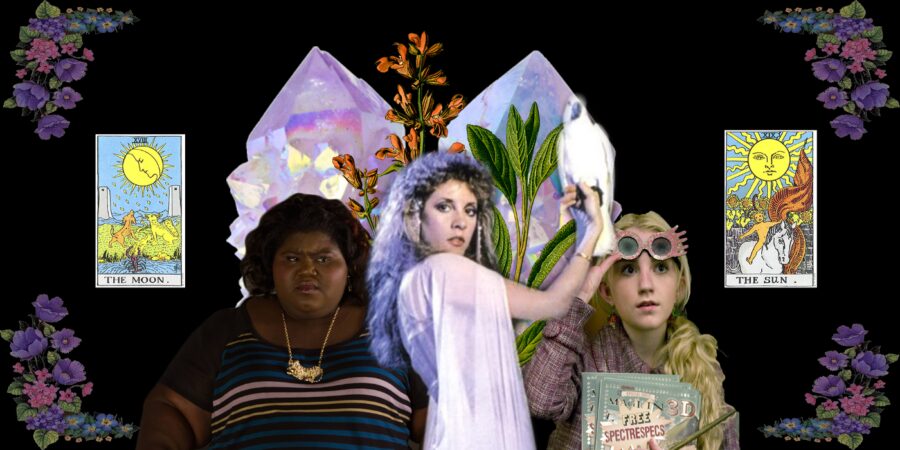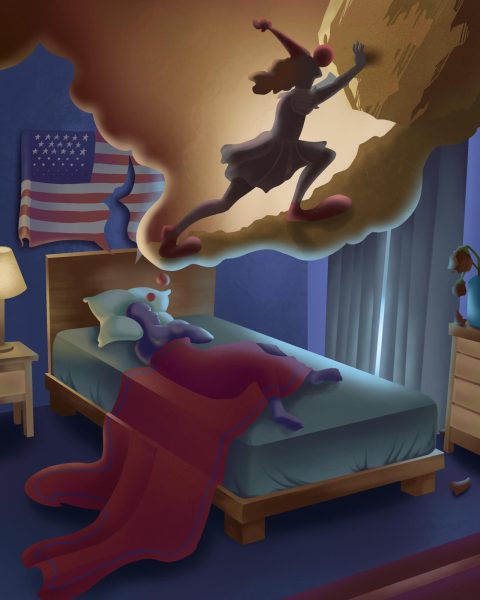Magic in the Craft
A guide to understanding modern witchcraft.
I was 18 when I was first introduced to witchcraft by my best friend. As someone who came from a religious background, I was anxious to cross this line between the supernatural and reality. It was hard to shake off the idea of a stereotypical witch when thinking about witchcraft.
But now, after two years, I have a notebook plastered with the words “Witchcraft and Other Supernatural Related Stuff” and my witch Pinterest board has a little over 60 pins. Witchcraft has changed dramatically from what I assumed it was.

The focus of modern witchcraft is empowerment and reclaiming the idea of being a witch. Witch culture had a history stemming from being considered evil, starting in 1658 when Elizabeth “Goody” Garlick, also known as Long Island’s Witch of Easthampton, was accused of being the reason behind the death of an already sick teen mom. Shortly afterward, the Salem Witch Trials occurred and took the lives of 19 people. This began the trend of people being punished for being witches, whether they were innocent or not.
But then the media started to change the image of a witch into something different, and the “beautiful, alluring witch” or “cute witch” aesthetic started to develop. “Bewitched,” came on air which focused on the life of a then modern-day witch who marries a mortal man and attempts to live a normal life without magic.
More recent shows and films like “Sabrina the Teenage Witch” and “ Haloweentow,” and even more recently “American Horror Story” continued this trend to end the whole “green-skinned, wart covered” stereotype of witches by establishing witches as normal people. Not only that, but witches were also often a strong female protagonist. While diversity for the modern witch still needs a lot of progress, it’s a step forward from what the premise was for witches. Now, witches are reclaiming the title completely and pushing for a culture that focuses on DIY, empowerment, and feminism.
In an interview in a BuzzFeed article titled, “How Witchcraft became a Brand,” Elizabeth Krohn the editor of “Sabat,” a self-described “magazine for the modern witch, “ said: “ “I realized that a lot of people who are deeper into witchcraft than me first got into it through pop culture references — that’s more accepted in the community than I first thought.”
She continued by saying, “I think for most [young witches] now, it’s a combination of the aesthetic and the search for something spiritual.”

While Etsy sells some amazing witch starter packs, witchcraft is not a start to finish journey. It’s a personal and spiritual one that’ll make its course in a variety of directions.
While there are many types of witches (witches interested in history and tradition, neo-pagan witches, secular witches, etc), I myself learn toward a green witch, with my focus being nature. Green witches revolve around Gaia, which in the Greek mythology is the personification of Earth and ancestral mother of all life and the teachings of Gerald Gardner, who is known as the “Father of Witchcraft.” The spells and meditation a green witch practices are nature-based and use a lot of herbs, rituals, and essential oils.
While money should never be a concern with witchcraft, some handy supplies in your pursuit to becoming a witch are:
- Wands. If you’ve seen “Harry Potter,” it is true for witches that the wand goes to the person it has a connection with when it comes to witchcraft too. Find a wand you have a feel for, or don’t use a wand at all. It’s entirely up to the you as a witch whether or not you want to use one.
- Mortar and pestles are great tools for spell cast as well, especially for green witches hoping to mix herbs or other ingredients.
- Herbs. A lot of spells require herbs in order to take in its full effect: sage, hazel, lavender are some of the more common herbs used in witchcraft. While, Scott Cunningham’s “Encyclopedia of Magical Herbs” is an good guide for new witches, this online reference guide gives you all the herbs you’ll probably be using and its meaning.
- And lastly, minerals and salt. These are used as common barriers against the world of spirits and can be used in cleansing and keeping your spell castings safe. Witches also use these minerals to charge their tools and protect themselves.
Now that you’ve gotten some tools, the next step is research. Witches should invest time in read texts about witchcraft and learn about their craft. The internet has a plethora of witch blogs one can go over, and getting a feel of different experiences other witches have had is a good way to learn more about the culture. Books as well can help you delve more into the topic, and libraries usually have a few books on Wiccan culture hidden between the shelves.
After researching, the next step is practice. It might feel a little intimating at first, but take a deep breath and go for it. From Pinterest to blogs, and other websites dedicated to understanding witch culture — spells can be found almost anywhere.
Keep in mind, all spells have potential consequences and dangers to them especially if being done with malice. Always think things over before you do them.
Another thing to practice is meditation. Particularly as a green witch, meditation both calms those involved, and can act as part of inner journeying. By beginning meditation, not only does one get access to other realms, but can meditation can bind witches to the outer world that they once cut ties with.
To emphasize again, no need to rush things. Take your time with this. Figure what matches your vibe. Figure what you like and dislike. This is your journey, and no one else’s.

Witchcraft emphasizes acceptance, but those in the modern witch era have been some of the biggest advocates for both empowerment and feminism.
After the results of this year’s presidential election, thousands of witches came together to put a spell on President Trump. In an article released by witch, Diana Wagman by the LA Times, she explained her reasoning being, “ I don’t believe in the devil, but I do believe our country has gone to hell, and I am willing to try anything to save us.”
As well, in an article released by Huffington Post on how magic can empower women, Stacy Rapp, a modern day witch and owner of the store Enchantments described the gender equality in the community that makes it appealing to the LGBTQ+ community due to its inclusiveness compared to other spiritual communities.
Rapp also described in the article why she created her store after seeing, ‘the extreme potential to undo a lot of the negative… attitudes toward women.” There is a strong system to help combat the cruel nature of life and those in a witch’s life, and an emphasis on love and loving one’s self in order to empower young witches, abused witches, and witches looking for empowerment.
Self-love and love in general are enter points in modern witchcraft. In an interview for an article on Vice entitled, “Witches of Seattle Tell Us the Appeal of Magic,” one of the witches, Lily Kay, told Vice she defined magic as: “Intention. And seeing the love and connection that exists in this world. I would define magic as the purest form of love and joy and sharing it in a way that is intentional, that thrives.”
Witchcraft is something for all people to enjoy, as said in this Modern Witch Daily’s short comic: “Anyone can become a witch.”







